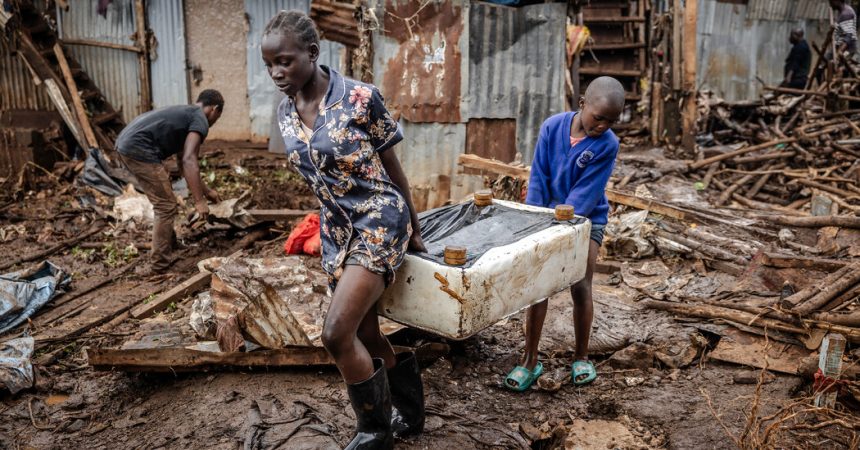At least 200 people were killed and dozens more were injured across East Africa in recent days, officials and aid groups said, as torrential rains, floods and landslides pummeled towns and cities in a region already grappling with the devastating effects of the climate change crisis.
The extreme rains unleashed a wave of destruction across Tanzania, Kenya and Burundi, flooding homes, demolishing businesses and leaving many people stranded on rooftops.
The downpours exposed yet again the bad roads and poor drainage systems in some of the region’s biggest cities, which residents have persistently complained about. They also revealed how poor people, who live in sprawling shantytowns without access to proper roads, water or power, bear the biggest brunt of destructive floods.
In Tanzania, at least 155 people were killed and 236 others were injured by the relentless rain that has swept several parts of the country in recent days, Prime Minister Kassim Majaliwa said on Thursday.
Speaking during a session in Parliament, Mr. Majaliwa said the rains had affected some 200,000 people and heavily damaged farms, bridges, roads, schools and places of worship. Some 10,000 homes in Tanzania were also damaged to varying degrees, he said.
The heavy downpours this week affected informal settlements in the Temeke and Ilala districts, which are part of the commercial port city of Dar es Salaam. Some roads were also submerged and temporarily closed on Tuesday in Dar’s Jangwani, Mkwajuni and Kigogo neighborhoods, all of which are prone to floods. Parts of the Morogoro Road, which leads into the central part of the city, were also underwater, leading to the suspension of the rapid bus network.
The Tanzania Meteorological Authority has warned that heavy rains and strong winds would continue to pummel several parts of the country in the coming days.
In Kenya, at least 45 people have died and at least 27 others have been injured since March, when the rainfall season, known in the country as the “long rains,” began, said Munir Ahmed, the senior communications officer with Kenya Red Cross.
The flooding has so far killed 4,000 livestock, destroyed 27,000 acres of crops and damaged 22 roads, Mr. Ahmed said in a phone interview on Thursday. More than 66,000 people have also been displaced nationwide, he said.
The intense rainfall has impacted 26 of Kenya’s 47 counties, Mr. Munir added.
In Kenya’s capital, Nairobi, where some of the country’s heaviest rain has fallen, more than 30,000 people have been displaced, according to the U.N. Office for the Coordination of Humanitarian Affairs. On Tuesday, 18 people, including seven children, who were stranded in the Mathare shantytown were rescued, the Kenya Red Cross Society said.
The heavy rains on Wednesday forced Kenya Railways to suspend commuter train services. The Kenya Urban Roads Authority also partially closed four major roads in Nairobi and warned of heavy flooding along several major highways in the capital and in the coastal city of Mombasa.
The floods also inundated several counties around Lake Victoria in western Kenya, aid groups said.
On Thursday, President William Ruto of Kenya led an emergency meeting aimed at responding to the floods. Mr. Ruto said government agencies were undertaking joint operations to assist the victims, conduct rescues and evacuate those who remain at risk. Mr. Ruto also said he asked the military to support the operations.
As in Tanzania, the rains in Kenya were not expected to subside over the next few days, according to the Kenya Meteorological Department, which had rain in the forecast for parts of the country, including Nairobi, through Monday. The agency also warned of a high likelihood of breakouts of diseases such as malaria in some areas.
“We need to put everyone on alert,” Mr. Ruto said.






